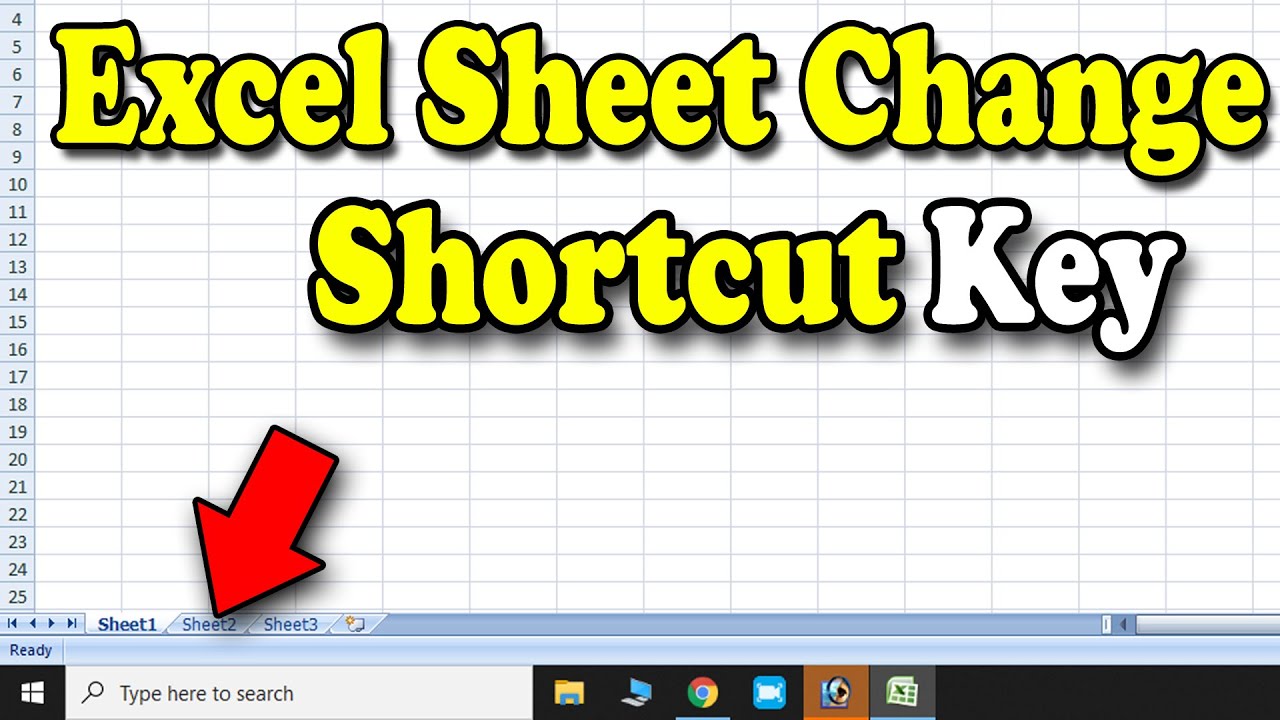How to Switch Between Excel Sheets Easily

Navigating between different sheets in Microsoft Excel can seem straightforward to some, but for many users, it's an area that can be optimized for better efficiency. Whether you're managing financial data, tracking inventory, or handling project schedules, knowing how to switch between Excel sheets quickly is vital for productivity.
Understanding Excel Workbook Structure


Before diving into the methods, it’s important to grasp the basic structure of an Excel workbook:
- Workbooks - The entire file containing your spreadsheets.
- Worksheets (or Sheets) - Individual tabs within the workbook where you enter data.
- Tab Scrolling Buttons - Located at the bottom of the Excel interface to navigate between sheets.
- Sheet Names - Clicking on these takes you to the respective sheet.
Mouse and Keyboard Techniques

Here are several techniques to switch between sheets with ease:
Using the Mouse

- Direct Click: Simply click on the tab name of the sheet you want to switch to.
- Tab Scrolling Buttons: These buttons at the bottom-right of the worksheet tabs allow you to scroll through sheets when you have many.
- Right-Click Menu: Right-click on any tab and choose from the list of worksheets. This is useful when you have numerous sheets.
Keyboard Shortcuts

Keyboard shortcuts can significantly speed up your navigation:
- Ctrl + Page Up/Page Down: This is one of the most convenient ways to move between sheets.
- Alt + E, S, W: Opens the Move or Copy dialog box, allowing you to switch or rearrange sheets.
- Control + Tab or Shift + Control + Tab: Cycles through open workbooks if you’re dealing with multiple Excel files.
Excel Options for Easier Navigation

Adjusting Excel settings can enhance your navigation experience:
Customize Sheet Tab Behavior

- Go to File > Options > Advanced.
- Look for the section titled “Display options for this workbook.”
- Here you can enable options like showing tabs for all workbooks or adjusting the number of visible sheet tabs.
🔍 Note: Changing these settings impacts how you interact with all workbooks, not just the current one.
Use Excel Add-Ins or Third-Party Tools

- There are various add-ins like Excel Shortcuts or Quicknav that provide additional shortcuts or functionalities for sheet navigation.
- Tools like AutoHotkey can be used to script custom navigation sequences.
Advanced Navigation Techniques

Using Excel Formulas and VBA

Excel offers powerful options with formulas and VBA for more dynamic navigation:
- Hyperlinks: You can create hyperlinks within cells to directly switch to another sheet.
=HYPERLINK(“#SheetName!A1”, “Click to go to SheetName”) - VBA: With VBA, you can create macros to automate sheet navigation.
Sub GoToSheet(sheetName As String)
Sheets(sheetName).Activate
End Sub
Organizing Sheets for Better Navigation

Effective organization reduces the need for navigation:
- Naming Conventions: Use clear, descriptive names for your sheets, making it easier to identify the content at a glance.
- Grouping: Group related sheets together for quicker navigation.
- Color Coding: Assign colors to tabs for visual cues.
💡 Note: These organizational strategies can make a huge difference in managing complex workbooks with many sheets.
Tips for Easy Sheet Switching

Here are additional tips to streamline your sheet navigation:
- Use Favorites: If you frequently work with a subset of sheets, keep them at the beginning for easy access.
- Keyboard Navigation: Learn the keyboard shortcuts specific to your version of Excel for quicker sheet switching.
- Use Tables: Here’s a simple table to remind you of essential shortcuts:
| Action | Shortcut |
|---|---|
| Move to the next sheet | Ctrl + Page Down |
| Move to the previous sheet | Ctrl + Page Up |
| Select a specific sheet | Alt + E, S, W, then select the sheet |
| Cycle through open workbooks | Control + Tab or Shift + Control + Tab |

Switching between Excel sheets efficiently not only saves time but also reduces the frustration of navigating complex spreadsheets. By utilizing the methods discussed, you can streamline your workflow significantly. Incorporating mouse techniques, mastering keyboard shortcuts, adjusting Excel settings, employing advanced navigation strategies, organizing your sheets, and leveraging these tips can transform how you interact with your Excel workbooks. With these practices in place, your productivity with Excel will undoubtedly increase, allowing you to focus more on the content of your work rather than the mechanics of navigating it.
How can I change the name of a sheet in Excel?

+
To change the name of a sheet, double-click on the sheet tab, type the new name, and press Enter.
What if I want to switch between sheets in different workbooks?

+
Use the keyboard shortcut Control + Tab to cycle through open workbooks or open the workbook directly from the Recent Workbooks or taskbar if it’s pinned there.
Are there any VBA scripts for automating sheet navigation?

+
Yes, VBA can automate many tasks in Excel, including sheet navigation. A simple script like the one provided in this article can switch between sheets based on a named sheet parameter.